Click here and press the right key for the next slide (or swipe left)
also ...
Press the left key to go backwards (or swipe right)
Press n to toggle whether notes are shown (no equivalent if you don't have a keyboard)
Press m or double tap to see a menu of slides

Acting Together
& Acting as One
s.butterfill@warwick.ac.uk


The tiny leaves blocked the drain.
1. The parents blocked the street.
+common effect
2. The parents ensured no shots were fired (Mexican standoff).
+common effect +coordination
Simple Account
Two or more agents act as one when there is an act-type, φ, such that each of several agents intends that they, these agents, φ together and their intentions are appropriately related to their actions.
Two or more agents act as one when there is an act-type, φ, such that each of several agents intends that they, these agents, φ together and their intentions are appropriately related to their actions.
3. The parents intended that they, the parents, walk together.
+common effect +coordination +intention
‘each agent does not just intend that the group perform the […] joint action.
‘Rather, each agent intends as well that the group perform this joint action in accordance with subplans (of the intentions in favor of the joint action) that mesh’
(Bratman 1992: 332)
We have a shared intention that we J if
‘1. (a) I intend that we J and (b) you intend that we J
‘2. I intend that we J in accordance with and because of la, lb, and meshing subplans of la and lb; you intend [likewise] …
‘3. 1 and 2 are common knowledge between us’
(Bratman 1993: View 4)
We have an unshared intention that we <J1, J2> iff
‘1. (a) I intend that we J1 and (b) you intend that we J2
‘2. I intend that we J1in accordance with and because of la, lb, and meshing subplans of la and lb; you intend [likewise] …
‘3. 1 and 2 are common knowledge between us’
We have a shared intention that we J if
‘1. (a) I intend that we J and (b) you intend that we J
‘2. I intend that we J in accordance with and because of la, lb, and meshing subplans of la and lb; you intend [likewise] …
‘3. 1 and 2 are common knowledge between us’
(Bratman 1993: View 4)


| true? | A&A make use of? | |
| Ayesha intends J1 | ✓ | ✓ |
| Ahmed intends J2 | ✓ | ✓ |
| J1=J2 | ✗ | ✗ |
| true? | B&B make use of? | |
| Beatrice intends J1 | ✓ | ✓ |
| Baldric intends J2 | ✓ | ✓ |
| J1=J2 | ✓ | ✗ |

Simple Account
Two or more agents act as one when there is an act-type, φ, such that each of several agents intends that they, these agents, φ together and their intentions are appropriately related to their actions.
We have a shared intention that we J if
‘1. (a) I intend that we J and (b) you intend that we J
‘2. I intend that we J in accordance with and because of la, lb, and meshing subplans of la and lb; you intend [likewise] …
‘3. 1 and 2 are common knowledge between us’
(Bratman 1993: View 4)
Parallel Planning
See also Raul Hakli & Pekka Mäkelä, ‘Planning in the We-mode’ (in preparation)
‘shared intentional agency consists, at bottom, in interconnected planning agency of the participants.’
(Bratman 2011, p. 11)
Facts about your plans feature in my plans & conversely.
We have a shared intention that we J if
‘1. (a) I intend that we J and (b) you intend that we J
‘2. I intend that we J in accordance with and because of la, lb, and meshing subplans of la and lb; you intend [likewise] …
‘3. 1 and 2 are common knowledge between us’
(Bratman 1993: View 4)
parallel planning
You plan our actions, yours and mine, and I plan our actions too





‘shared intentional agency consists, at bottom, in interconnected planning agency of the participants.’
(Bratman 2011, p. 11)
Facts about your plans feature in my plans & conversely.
parallel planning
You plan my actions as well as yours, and I do likewise.
agent-neutral practical deliberation
But what attitude results from practical deliberation?
open-ended intentionsTo solve this dilemma we need to appeal to some ways in which intentions can be open-ended.: whatIt's a familiar idea that intentions can be open-ended with respect to what is intended.For instance, you can intend to visit the Weinachtsmarkt without intending to do so on any particular day., and whoIt's also true that intentions can be open-ended with respect to who will act on them.Consider a couple planning some tasks at the start of the weekend: they need to buy bread, to clean the bath, ... At this point, their intention is that one or both of them will do each of these things, but there is no further specification concerning who will act. Now you might say that you can't intend something without settling who will act. But this seems wrong given that (i) the couple's attitudes are practical, and (ii) generate requirements concerning agglommeration. (Even before it's determined who will do what, I know that I'm not going to be able to spend the afternoon in the pub.)[*skip] You might also say that open-ended intentions generate pressure to filling in details. This is true, but the details are not always filled by further intentions. At some point intentions give out and we just act. The point of appealing to the table-moving example was that here there is no need for the intention to specify the agents.I want to suggest that appeal to the open-endedness of intentions will help with the dilemma I had.The problem was, what attitude could I have to another's actions?

‘shared intentional agency consists, at bottom, in interconnected planning agency of the participants.’
(Bratman 2011, p. 11)
Facts about your plans feature in my plans & conversely.
parallel planning
You plan my actions as well as yours, and I do likewise.
parallel planning yields practical unity
Simple Account
Two or more agents act as one when there is an act-type, φ, such that each of several agents intends that they, these agents, φ together and their intentions are appropriately related to their actions.
We have a shared intention that we J if
‘1. (a) I intend that we J and (b) you intend that we J
‘2. I intend that we J in accordance with and because of la, lb, and meshing subplans of la and lb; you intend [likewise] …
‘3. 1 and 2 are common knowledge between us’
(Bratman 1993: View 4)
acting as one
Any evidence for parallel planning-like motor processes?
- Each represents a single outcome motorically, and
- in each agent this representation triggers planning-like processes
- concerning all the agents' actions, with the result that
- coordination of their actions is facilitated.

Kourtis et al (2014, figure 1c)

Kourtis et al (2014, figure 1c)

Kourtis et al (2014, figure 1c)

joint

individual-bimanual

individual-unimanual

Sharing a Smile



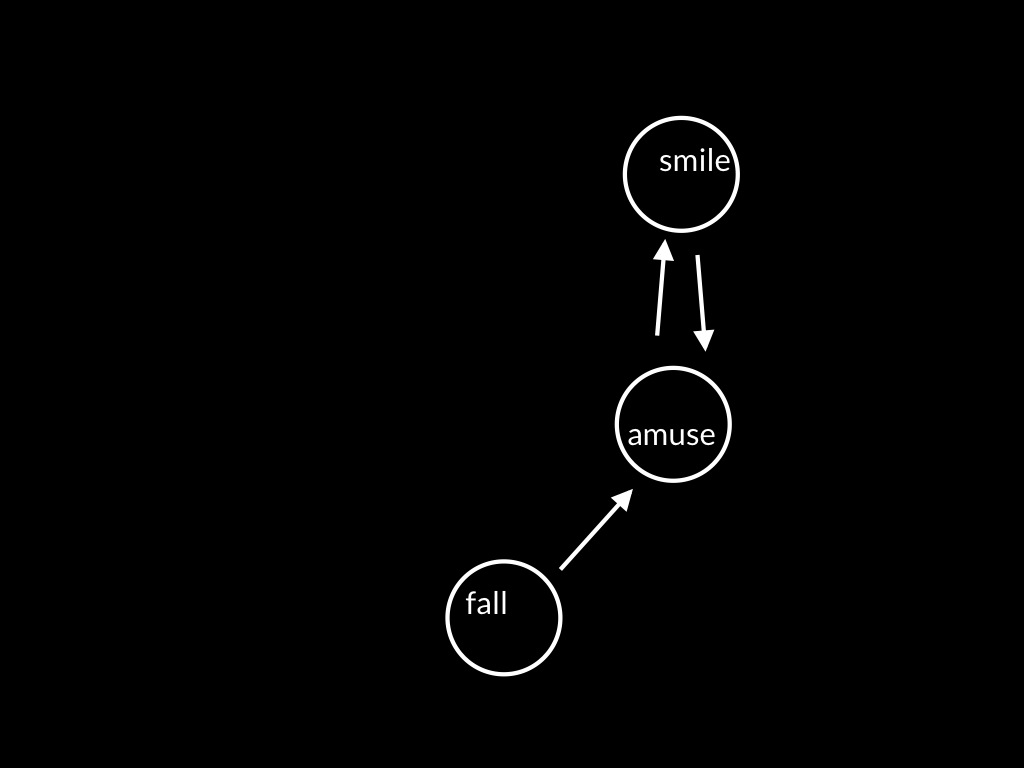
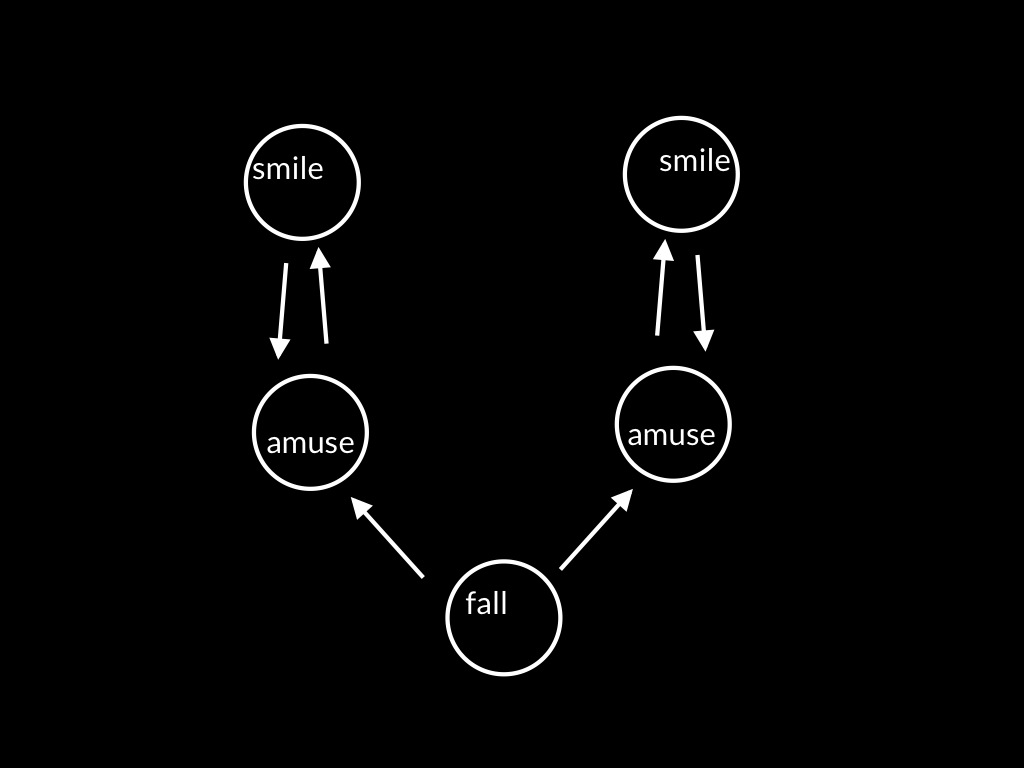
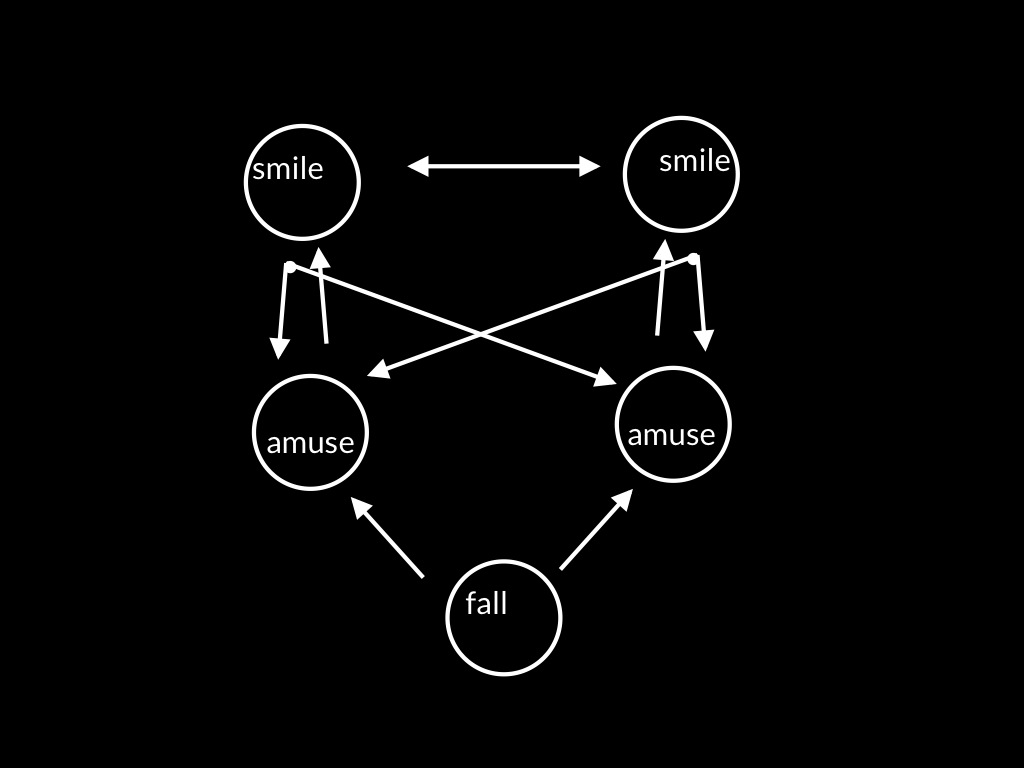
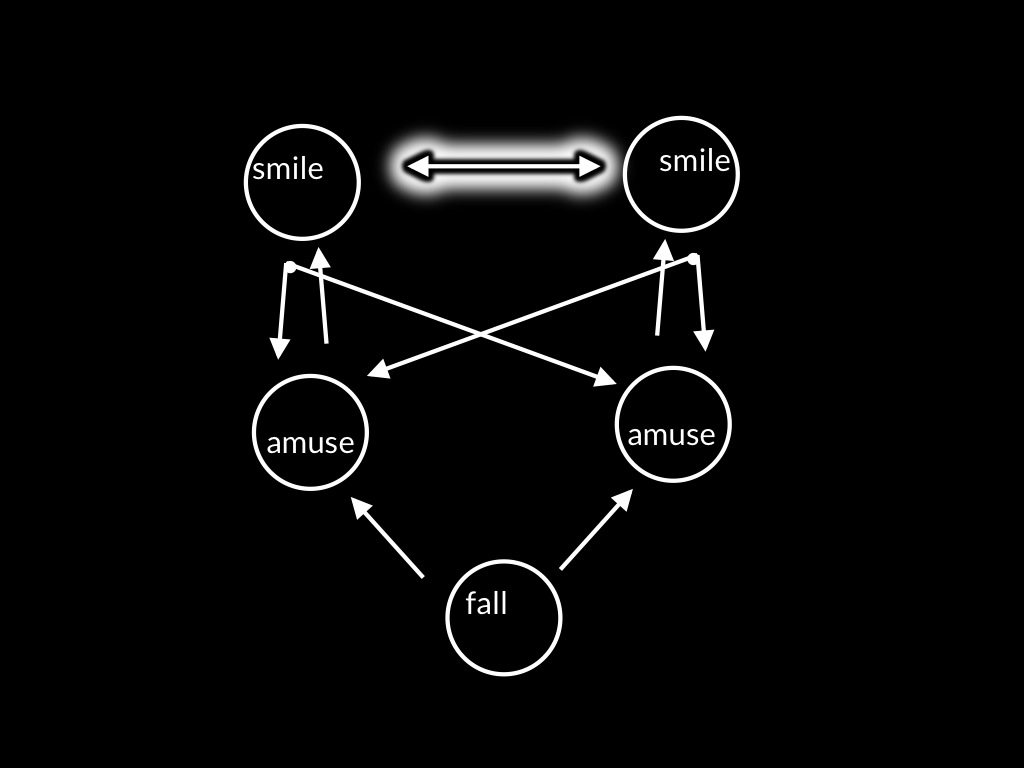
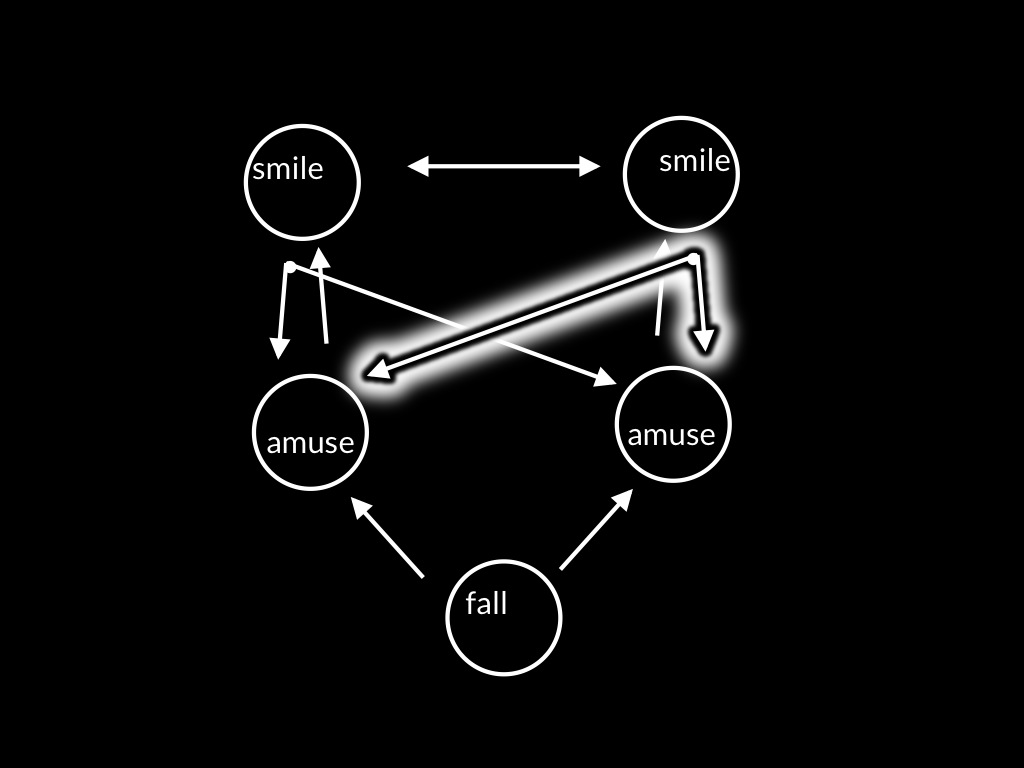
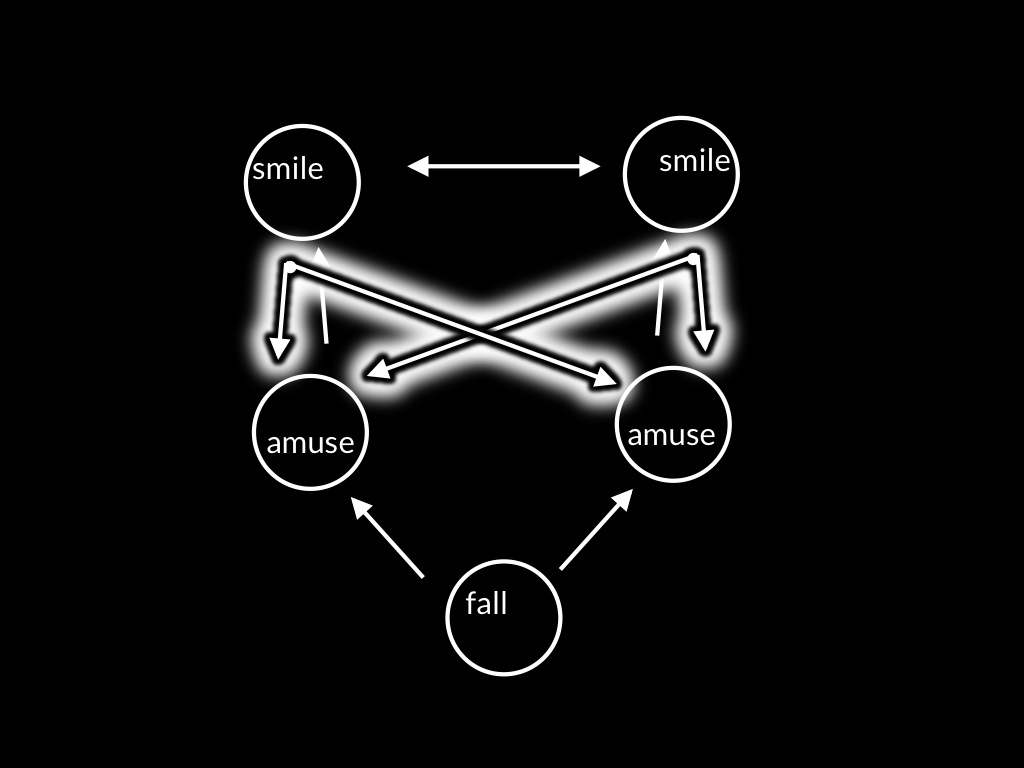

conclusion